|
Secret Agents of Islam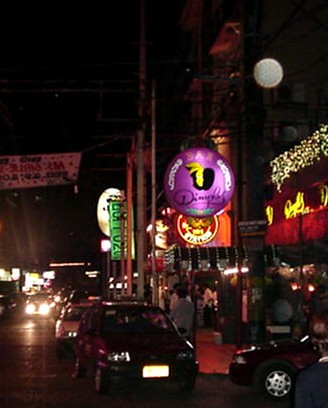 When Ramzi Yousef was captured and brought to trial, many people were surprised to hear about his lifestyle.
When Ramzi Yousef was captured and brought to trial, many people were surprised to hear about his lifestyle. Yousef was an inveterate womanizer. He drank, he went to all-night discos, he took scuba diving vacations. He was not known to pray much (outside of prison), nor to observe Islamic holidays. Nevertheless, he presented himself -- in court and in life -- as a warrior for Islam. He took money from strict Muslim fundamentalists, and he worked to help advance their aims. He wrote poems about his love for God. In 1997 and 1998, Osama bin Laden praised him in interviews as a man devoted to protecting the Muslim community. He also warned that Yousef was not unique. "[I]f the American government is serious about avoiding the explosions inside the U.S., then let it stop provoking the feelings of 1,250 million Muslims," bin Laden warned, four years before the September 11 attack. "Those hundreds of thousands who have been killed or displaced in Iraq, Palestine, Lebanon, do have brothers and relatives. They would make of Ramzi Yousef a symbol and a teacher. The U.S. will drive them to transfer the battle into the United States." This was not idle talk, it was the open declaration of a war which had already been underway for nearly a decade. When bin Laden spoke those words to CNN's Peter Arnett in 1997, al Qaeda had already moved dozens of sleeper agents inside the United States -- dozens at minimum. Like Ramzi Yousef, these men were enigmas. Some devoutly followed the strictures of Islam. Others seemed to flaunt them. Yousef's explosive genius might have been unique, but his status as an infiltrator of Western society was not. al Qaeda's No. 3 official Khalid Shaikh Mohammed was a well-known womanizer. Khalid Shaikh, Yousef and other accomplices frequented seedy clubs in Manila's red-light district, such as the Manila Bay Club and Sir Williams Karaoke, according to CNN reporter Maria Ressa, writing in Seeds of Terror. Later, in Florida and Massachusetts, several of the September 11 hijackers even patronized strip clubs and prostitutes. Western observers were quick to point out the seeming hypocrisy -- killing in the name of Islam, while failing to follow Islamic traditions and laws. When the topic was raised, however, it was usually as a propaganda tool, a rhetorical device to diminish the terrorists by deriding them as perverts, hypocrites and bad Muslims. But it's more complicated than that. al Qaeda operatives routinely take on deep cover roles in order to infiltrate an enemy's society. This isn't simply a pragmatic decision to disregard the tenets of Islam in order to accomplish a goal. Rather, it's a specific, traditional practice, justified through an elaborate theological framework. The approach was first employed in the 11th century, by the Assassins, a notorious cult of Islamic extremists. Today, the practice is continued by a similar sect, known as Al Takfir Wal Hijra, which represents a key faction in the top leadership of al Qaeda. There are numerous similarities between the Assassins and the Takfiri -- including operational structure, strategy and theology. But the sects are separated by a centuries-long chasm of deep sectarian conflict. But, then and now, these men shared a common vocation -- secret agents for an extreme vision of Islam. They were -- and are -- the ultimate infiltrators, unbound by moral restraint. These men are not subject to any meaningful cultural repercussions for their acts. Nor are they subject to an inner moral conflict. The are amoral machines by design, licensed to kill. al Qaeda's Assassins
The Arabic name translates roughly as "anathema and exile" or "excommunication and emigration." A theologically extreme extension of fundamentalist Islamic doctrines, Takfir is dedicated to restoring the Caliphate, the Islamic political empire that once spanned the Near and Middle East. Takfir differs from establishment fundamentalists (such as Saudi Arabian Wahabbism) in two major respects. First, Takfiri cultists practice an extreme form of assimilation. And second, they openly embrace of violent, evangelistic jihad. An essential part of Takfiri religious practice is the infiltration of enemy societies, usually meaning Western society. Like the Assassins before them, Takfiri members are permitted to take any measure necessary to assimilate, a stipulation which amounts to a blanket exemption from virtually every aspect of Islamic law. To outsiders, Takfiri can appear to be entirely secular, frequently engaging in sexual activity and drinking alcohol in order to hide their religious beliefs. This behavior has been seen repeatedly among key al Qaeda operatives such as Yousef and Khalid Shaikh (who have not previously been identified as Takfiri). The other element that distinguishes Takfir from simple fundamentalism is the sect's violence -- specifically its obligation to violent jihad. Even among extremely rigid Islamist movements such as Wahabbism, jihad can be read to include any number of nonviolent activities. But Takfiris believe that violent struggle is essential to jihad. Going further still, the sect believes violence may justly be directed toward any non-Muslim, or even toward observant Muslims whose activities are perceived as undercutting the establishment of Islamic governments. Targets can include governments that actively oppose Takfir efforts, those perceived to be collaborators, competing sects whose beliefs are considered heretical, and innocent bystanders (Muslim or not) whose deaths advance the cult's political purpose. "(O)nce you're in, you never get out," said Roland Jacquard, an expert on Islamic terrorism, in a 2001 interview with Time Magazine. "The Takfir rely on brainwashing and an extreme regime of discipline to weed out the weak links and ensure loyalty and obedience from those taken as members."
Attacked From An Egyptian BaseAyman Al-Zawahiri, Osama bin Laden's second-in-command, is believed to be a member of the Takfir sect. Zawahiri founded Egyptian Islamic Jihad (EIJ), an organization that in many ways authored the philosophy of jihad that now drives al Qaeda. EIJ helped assassinate Anwar Sadat in 1981.Starting in the late 1980s, a group of terrorist sleeper agents working for Zawahiri emigrated to the United States. The first wave consisted of at least a half dozen confirmed agents, but it's likely the total number was significantly higher.
On their arrival, the first-wave infiltrators did not turn immediately to plotting attacks. Instead, they started building an infrastructure, networks through which they would provide crucial financial and logistical support to plots on U.S. soil and abroad. Members of this Egyptian clique were linked through the al-Kifah mosque, in Brooklyn, a conduit for funds and personnel tied to al Qaeda and the jihad against the Soviet Union in Afghanistan. From Brooklyn, the sleepers recruited foreign nationals, U.S. citizens and even American war veterans to join their ranks. No one in this first wave of infiltrators fit any sort of predictable profile for an Islamic fundamentalist at the time, although some did portray themselves as devout Muslims. The first wave assimilated almost effortlessly into U.S. society. Mahmud Abouhalima joined the NRA. One member, Ali Mohammed, even joined the U.S. Army, rising to the rank of sergeant in the Special Forces. Later, Mohammed would train Osama bin Laden's personal bodyguards in the Sudan.
Several cell members assisted Ramzi Yousef in bombing the World Trade Center in February 1993. Other cell operatives, including some recruited on U.S. soil, attempted to bomb New York City landmarks in the spring of that year. Both plots were directly tied to al Qaeda. bin Laden is believed to have helped finance the attacks, and he may have had a role in directing them as well. Dozens of terrorist operatives and collaborators were exposed when the FBI finally broke the cell, with the help of another Egyptian national, an informant named Emad Salem. Even faced with hundreds of hours of testimony, and thousands of pages of documents, the United States failed to realize the depth of the infiltration or its meaning. While many members of that first wave of infiltrators have since been convicted of terrorism and related crimes, some members of the cell are still at large -- some evading arrest altogether, others cutting top-secret plea bargains in exchange for testimony.
Q PrimeIt's fair to ask what Takfir Wal Hijra and Egyptian Islamic Jihad have to do with al Qaeda. There are two ways to usefully answer that question, one simplistic, the other holistic.On a simplistic level, al Qaeda and Takfir and EIJ share key members and funding mechanisms. These can be drawn on a chart or listed. They are concrete connections, if not simple.
As it is commonly understood, "corporate al Qaeda" is too rigid and limited to illustrate the real reach of the corresponding terror network. al Qaeda "the movement" implies the absence of a command-and-control relationship between AQ and a group like EIJ. When most people use the term "al Qaeda," they're talking about the broad international conspiracy focused on attacking the U.S. with a specific set of tactics and under the theological umbrella of Osama bin Laden. Think of this grouping as "QPrime," an inner circle command-and-control structure which effectively coordinates terrorist activity across many ethnic and organizational lines. QPrime is essentially a real network that most closely matches the popular understanding of al Qaeda. Osama bin Laden and Ayman al-Zawahiri are just two members of QPrime, part of the network's inner leadership circle. When people talk about al Qaeda, they're usually talking about the network, QPrime, which includes components such as EIJ and the Takfiri cult. All references to al Qaeda in this series of articles are inclusive of the broad QPrime network.
Coming To AmericaThe first wave of al Qaeda assassins represented a conspiracy of shocking scale. A component of al Qaeda for most meaningful purposes, the Egyptian Islamic Jihad cell in New York City had operatives within several mosques and Islamic centers around the country, even within the U.S. Army.EIJ's sleeper agents were stationed in at least seven states, including Arizona, Illinois, California, New York, Virginia, Texas and Florida, according to trial evidence and testimony in terrorist prosecutions from 1995 to the present. Before the attacks of September 11, most Americans -- even within the U.S. intelligence community -- would have dismissed as paranoid nonsense the very notion that hundreds of Islamic extremists could be living undercover in places such as Arizona, Oklahoma and Kansas. After September 11, Americans were instead asking: "How did this happen?" The answer to that question begins 900 years in the past, when the Assassins raised the act of religious violence to an art form. Next: Mind Control And Murder Cults |
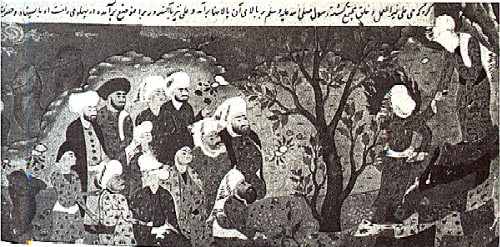
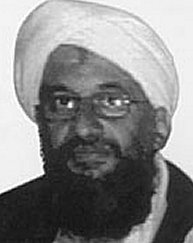 Made up mostly of Egyptian nationals, the group emigrated to the U.S. over the the course of several years, forming a sleeper cell that would wreak great damage before finally being exposed.
Made up mostly of Egyptian nationals, the group emigrated to the U.S. over the the course of several years, forming a sleeper cell that would wreak great damage before finally being exposed. 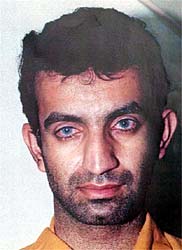 Another member of this EIJ sleeper cell, El Sayyid Nosair, assassinated right-wing Rabbi Meir Kahane in 1990. Nosair was not only acquitted of the murder, which took place in front of a room full of witnesses, but authorities didn't detect the larger conspiracy behind his act until years later.
Another member of this EIJ sleeper cell, El Sayyid Nosair, assassinated right-wing Rabbi Meir Kahane in 1990. Nosair was not only acquitted of the murder, which took place in front of a room full of witnesses, but authorities didn't detect the larger conspiracy behind his act until years later. 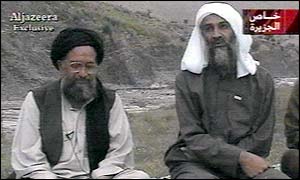 On a holistic level, the issue becomes more complicated. There is a broad public debate about the organization of al Qaeda. Many terrorism experts have touched on this by defining a difference between "al Qaeda, the movement" (seemingly independent terror groups sharing al Qaeda's ideology) and the "corporate al Qaeda" (a cohesive operational group led by Osama bin Laden).
On a holistic level, the issue becomes more complicated. There is a broad public debate about the organization of al Qaeda. Many terrorism experts have touched on this by defining a difference between "al Qaeda, the movement" (seemingly independent terror groups sharing al Qaeda's ideology) and the "corporate al Qaeda" (a cohesive operational group led by Osama bin Laden).